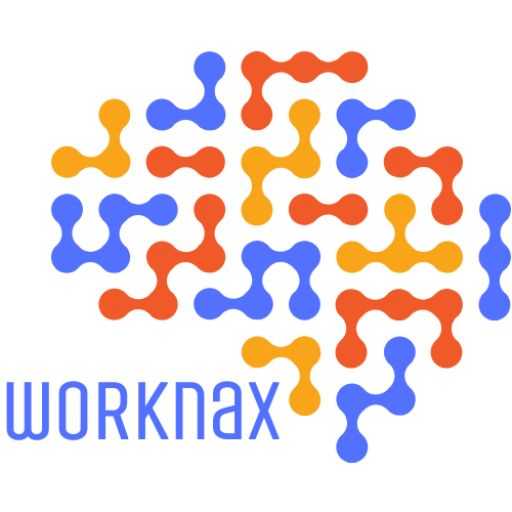Anúncios
Complete Fast Learning Guide in 2025 opens a clear path to build durable skills and save time in your daily life.
You start by treating learning as a meta-skill that changes how you study and use information. The goal is not hype, but steady results you can measure. You will see why active recall, spacing, and focused practice beat motivation sprints.
This article gives a compact plan: pick the right book, scope goals, and avoid low-yield things. You’ll learn simple tactics like spaced review (Anki), feedback loops, and overlearning to lock memory into your brain. By the end, you get practical steps to apply effective learning across work, school, and passion projects.
Key Takeaways
- Meta-skill payoff: Improve how you learn, and you free time for other goals.
- Active methods beat passive reading for better memory retention.
- Spaced review fights the forgetting curve; tools like Anki help.
- Scope goals, choose the right book, and avoid low-yield things.
- Small daily habits compound into big gains without burnout.
Introduction: Why a fast learning guide 2025 matters for your goals
Start here: learn how to shape study into a reliable process that actually sticks. You want results that last, not a burst of effort that fades. This section explains why that difference matters for school, work, and personal skills.
What “learning fast” really means in the present day
“Fast” means you build knowledge that transfers to real tasks. You redefine speed as retention and transfer, not cramming that vanishes in days.
You pick one book to guide a month and one simple system to keep momentum. That way your learning journey has clear steps and visible milestones.
How evidence-based methods beat motivation alone
Active recall and retrieval practice work because they make the brain pull information out, which strengthens memory.
“Effortful retrieval beats passive review; spacing and varied practice protect memory from rapid forgetting.”
Famous books like Make It Stick and Ultralearning (Scott Young) show practical methods. Use short tests, spaced reviews, and real-context drills to turn information into usable knowledge.
- Spot passive study and swap in small drills.
- Measure gains weekly so progress is visible.
- Connect school tasks to real-world outcomes for lasting skill.
Set up your meta-learning plan before you start
Start simple: name one skill, one clear outcome, and a short time window (for example, 10 hours over two weeks). This makes progress trackable and keeps decisions light.
Sharpen the axe: define scope, resources, and success criteria
List one book, one course, and one set of practice items so you don’t waste time choosing in each session.
Write plain success criteria like “teach three core ideas to a friend without notes.” That tells your brain what counts as victory.
Find weak links and target them with focused drills
Run a 20-minute baseline test to reveal gaps. Rank weak topics by impact.
- Create five focused drills that attack the biggest bottlenecks first.
- Block calendar time and use a start trigger (the five-minute rule) and a hard stop to avoid burnout.
- Capture information into a reusable Q&A deck or checklist for reviews.
“Light planning and targeted drills accelerate progress more than broad, passive study.”
Decide how you’ll measure weekly gains (accuracy %, time-to-answer, or task completion). Log each session’s experience and one idea to try next time. Schedule spaced sessions now so the plan survives busy days.
Use proven techniques that make learning stick
Adopt methods that turn short-term facts into lasting knowledge. This section gives clear, evidence-based tactics you can use in the learning process. Keep sessions short and active so your brain stays engaged.
Active recall and retrieval practice: test to remember
Convert notes into questions and answer from memory first. Then check the source in your book or notes.
Retrieval practice strengthens memory far more than rereading. Make mini-tests and quiz yourself after each session.
Spaced repetition vs. the forgetting curve: timing your reviews
Space reviews to counter the forgetting curve. Try same-day, 2–3 days, one week, then monthly.
Tools like Anki implement spaced repetition so items you master appear less often and weak ones come back sooner.
Desirable difficulty: calibrate challenge to your current level
Keep tasks just above your current level. The right struggle signals your brain to encode stronger memories.
Track effort: challenge without panic. That sweet spot makes progress steady.
Overlearning and first principles: go deeper than “just enough”
Overlearn key moves, add variations, and explain the why from first principles. This makes transfer to new contexts easier and the skill becomes easier to apply.
Teach what you’re learning to consolidate knowledge
Teach a mini-lesson to a peer or camera. Explaining forces clarity and reveals gaps you missed.
- Seed a Q&A deck from a book summary and refine with your examples.
- Practice short, frequent sessions to protect your memory and energy.
- Keep a parking lot for fuzzy things; make them first drills tomorrow so you learn faster.
Design your environment for focus and immersion
Create a workspace that nudges you into focus the moment you sit down. Small changes remove friction and make practice the easiest choice.

Five-minute rule, device distance, and single-tasking
Start small: tell yourself you’ll work for five minutes. That short commitment beats the inertia that steals hours.
Put your phone in another room and keep only the things you need at arm’s length. This clears visual clutter so your brain can hold fewer distractions.
Work in 25–50 minute blocks and single-task. Your memory encodes better when attention isn’t split.
Immersion in real contexts: learn where you’ll use the skill
Practice where the skill matters. For a language, speak with people during a 15-minute coffee break. For coding, open your editor and ship a tiny change daily.
Ultralearning Scott emphasizes immersion as a multiplier: real contexts speed transfer from study to use.
- Set cues: open the book to the drill page or queue the first flash card so starting takes zero willpower.
- Log a short note after each block to capture one insight and remove friction next time.
- Batch similar tasks and keep context steady so memory links stay strong.
- Reward sessions with a brief break outside the workspace to reinforce the routine.
“Design the room, then design the habit.”
Apply the system to school and standardized progress monitoring
Make assessment dates the spine of your study calendar so work focuses on what matters.
Align study cycles with Florida’s FAST cadence: plan three peaks per year for ELA Reading and Math. These checkpoints match progress monitoring windows from VPK to grade 10 (Reading) and VPK to grade 8 (Math).
Align your study plan with Florida’s FAST progress monitoring cadence
Map weekly reviews to the three FAST checkpoints. Schedule short sessions that ramp before each window and taper after. This keeps your time efficient and reduces last-minute cramming.
Use B.E.S.T. standards categories to plan active recall sessions
Use test blueprints and B.E.S.T. reporting categories to build focused Q&A decks. Prioritize high-weight topics from the blueprints so students spend effort where it changes scores most.
- Pull practice items that mirror computer-adaptive testing so the brain adapts to changing difficulty.
- Create simple systems to log accuracy by category, time-per-item, and common mistake types.
- Separate Writing and Algebra 1/Geometry EOC work since those are outside FAST monitoring.
“Rehearse official calculator and reference policies ahead of the day so there are no surprises.”
Teach key categories to peers; explaining cements knowledge for you and the people you teach. Tie prep to a real job or college goal to keep motivation steady across the school year.
Apply the system to new skills: a 2025 Swift learning sprint
Launch a compact Swift sprint to turn a new idea into a tiny app in days. Start with Apple’s free book, “The Swift Programming Language,” and spend 60 minutes in Swift Playgrounds to see syntax and types in action.
Swift fast-track: docs, Playgrounds, and a weekend project
Pick a simple project: tip calculator, to-do list, or weather client. Ship it over a weekend so you’ll learn the end-to-end flow.
Use SwiftUI for interface work. Read a short chapter, then code a small screen. Short cycles lock concepts into memory.
Short feedback loops: tiny apps, code reviews, and communities
Practice daily in 25-minute sessions: 10 minutes of drills, 15 minutes building or refactoring. Post one concrete question on Swift Forums or Stack Overflow for quick feedback.
- Join beginner-friendly people who trade reviews and help keep momentum.
- Add a small stretch goal (a SwiftUI button state) to stay a level above comfort.
- Track experience weekly: bugs fixed, patterns you recall without notes, and faster fixes.
“Ship a tiny app, ask one clear question, then queue the next idea.”
Connect the sprint to a job outcome: a short demo video or GitHub README. That turns practice into visible skills and confidence.
Build tight feedback loops and measure progress
Short, timely feedback shifts practice from guessing to targeted improvement. That change makes each session count and helps your brain encode the right patterns.
Use coaches, peers, or self-recording so you get actionable feedback within 24–48 hours of a milestone. Ask people for one strength and one fix. Narrow focus keeps adjustments small and repeatable.
Fast feedback: coaches, peers, and self-recording
Record short clips, screenshots, or logs and annotate mistakes. Seeing an error speeds correction more than a note you forget.
Work with a coach or peer who gives two clear items: what was good and one precise change. This makes changes stick and the next practice session sharper.
Tracking: review spacing, accuracy rates, and time-on-task
Track three metrics: accuracy, time-on-task, and retention. Use simple tools—one tracker, one deck, and one calendar alarm—so data stays useful, not overwhelming.
- Feedback within 24–48 hours so corrections compound.
- Increase difficulty only after accuracy holds for two sessions.
- Move perfect items outward in your spacing; missed items come back sooner.
- Log practice streaks and planned rest days to balance intensity and recovery.
- Summarize weekly experience in three bullets: what worked, what to change, what to test next.
“Adjust the level carefully: the right challenge means progress, not frustration.”
Document knowledge gaps and convert them into tomorrow’s drills. This simple way keeps your practice focused so a tough concept slowly becomes easier to use as your skill and confidence grow.
fast learning guide 2025: your week-by-week action plan
Start your week with a clear scope and one simple test to measure where you are. Spend a few hours in week one to set goals, run a baseline, and build your first Q&A deck. Set a feedback cadence so you get corrections within 48 hours.

Week one: meta setup and baseline
Pick one book or core resource. Run a 20-minute baseline test to find weak links. Create a spaced repetition deck and link it to your calendar.
Each day schedule one 25-minute block plus a 5-minute debrief. Capture new information and one next step. Log accuracy and time-per-item so the data guides practice.
Weeks two to four: practice, spacing, immersion
Lead with retrieval practice in short cycles. Use spaced repetition to bring items back before they fade from memory. Add one immersion task that uses knowledge in context each week.
Track three simple metrics: accuracy, time, and retention. Raise the level by adding one harder drill every other session once accuracy holds steady.
Beyond four weeks: teach, refine, and scale
Teach a concept weekly. Explaining what you’ve learned makes gaps obvious and fixable. Keep a list of things you missed and take first cracks at them in the next session.
Maintain spaced repetition, rotate advanced variations, and document processes you’ve learned. Review monthly: celebrate wins, prune low-value tasks, and queue one new idea to try next month.
- Weekly build: scope, baseline, card deck.
- Daily habit: 25 minutes + 5-minute debrief.
- Measure: accuracy, time, retention.
- Progress: raise level, teach, fix weak links.
“Small, consistent cycles beat occasional marathon sessions.”
Conclusion
Finish with a simple process you can use today. Pick one 25-minute block, one retrieval set, and one tiny real-world action from a book or note. That small step helps the brain encode new things and make memory stick.
You leave this article with a repeatable process for school, job, and creative life. Track your experience weekly, ask people for concrete feedback, and keep one idea queued so you can start learning tomorrow—even if you ’ve already had a long day.
Trust small reps over big marathons. Teach one concept next month to anchor what you ’re learning and move your skills into useful work in the world.



